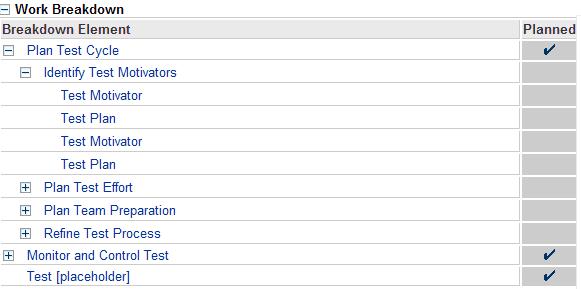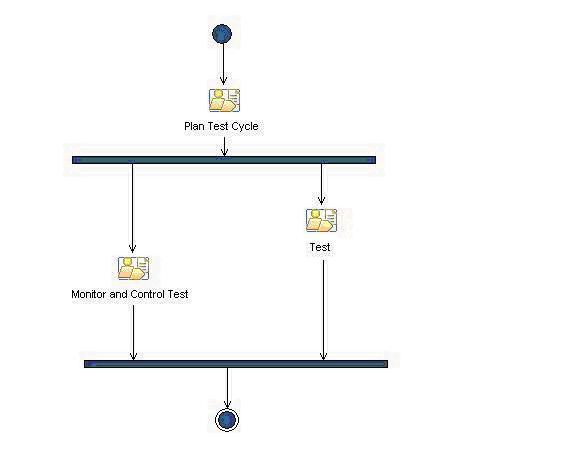| Concept: Basic Process Concepts |
 |
|
The Basic ElementsThe basic elements of a process website are:
These "basic elements" are the building blocks from which processes are composed. Organizing ElementsThe basic elements are organized using the following elements. PracticeA practice is a documented approach to solving one or several commonly occurring problems. Practices are intended as "chunks" of process for adoption, enablement, and configuration. Practices are built from the basic elements described above. ConfigurationFrom the end-user perspective, a configuration is a selection of method content to be published. Most configurations consist of a selection of practices plus some content to tie the practices together. The published configuration is often loosely referred to as a process website. Details and ExamplesThe following provides more detail about the basic elements and provides some examples. Work productWork products may take various shapes or forms, such as:
Work products can be classified as "artifacts" if they are concrete things, "outcomes" if they are not concrete, and "deliverables" if they are a packaging of artifacts. Role
A role defines the behavior and responsibilities of an individual, or a set of individuals working together as a team,
within the context of a software engineering organization. Some examples:
TaskA task is work performed by a role. It is usually defined as a series of steps that involve creating or updating one or more work products. Some examples:
ProcessProcesses pull together tasks, work products, and roles, and add structure and sequencing information. Tasks or work products can be grouped into higher level activities, called a work breakdown structure (WBS). Activities or tasks can be marked as "planned" to identify work that you expect to assign and track.  Figure 1: Example Work Breakdown Diagrams can be added to providing sequencing information. The following example shows an initial activity, "Plan Test Cycle", followed by two activities that go in parallel, "Monitor and Control Test" and "Test".  Figure 2: Example Activity Diagram Note that a reusable partial process is sometimes referred to as a capability pattern. For More InformationMore in-depth material on these concepts is generally found in articles on EPF Composer and Rational(R) Method Composer, which use these concepts as building blocks.
|
This program and the accompanying materials are made available under the |